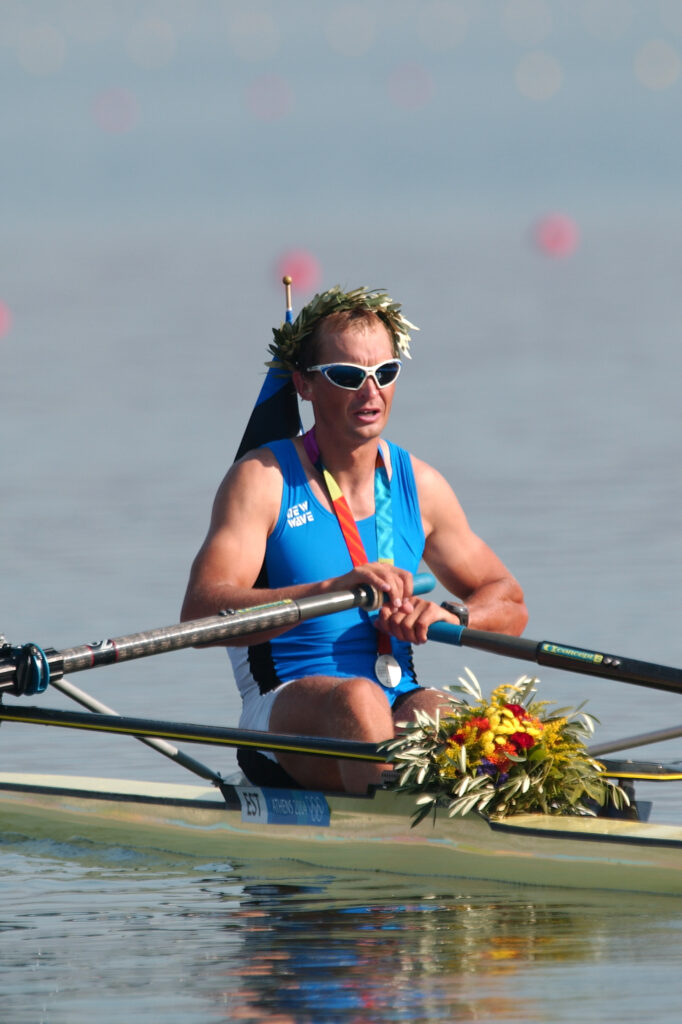
19 Sep 2023
Where are they now … Jueri Jaanson
Estonian rowing would not be the same without Jueri Jaanson. He is the nation’s most successful rower with five World Championship medals and two Olympic medals. He competed at six Olympic Games including silver at his final Games (Beijing 2008) at 42 years old.
Jaanson’s sporting life started with a whole range of activities including cross-country skiing. Then in 1981, as a 16-year-old Jaanson was introduced to rowing. He tried it, liked it and, as Jaanson says, “remained at it”.

“I loved the wonderful feeling of the boat gliding quickly on the water. I also learned the basic technique of rowing quite quickly, which made rowing enjoyable for me.”
As a 16-year-old Estonia was part of the Soviet Union so when Jaanson made the national team and raced in the single at the 1987 World Rowing Championships, he raced as USSR. Jaanson finished fifth behind single sculling greats Thomas Lange, Peter-Michael Kolbe and Pertti Karppinen.
Five years into his international career, in 1992, Estonia gained independence. He says the change from rowing for the Soviet Union to rowing for Estonia was complex. The size of the Soviet Union meant a lot more training sites and comprehensive development and support system. They had the use of training facilities to suit the season and requirements. In winter they would head to Azerbaijan on-water training.
“After Estonia’s independence, our sports system was broken and there was no or very little financial support to cover training needs,” says Jaanson. “The entire preparation system had to be rebuilt. But opportunity to compete for an independent Estonia helped to forget this pain and it was a strong motivator.”
Despite the turbulence caused by the fall of the Soviet Union, in the same year as Estonian independence Jaanson finished fifth in the single at the Barcelona Olympic Games.
It took until Jaanson’s fifth Olympic Games to medal. At the 2004 Athens Olympics Jaanson finished second to Norway’s Olaf Tufte. With 500m left to row the two scullers were neck-and-neck. Tufte only just pulled away to win. Jaanson medalled again at the Beijing Olympics, this time in the double with Tonu Endrekson. Jaanson was 42.
Jaanson’s list of races he’s most proud of is long. It includes the World Champs in 1990, then both Olympic Games he medalled at and Lucerne in 1990, 1995 and 2007. There’s also the Henley regatta in 1995, the Head of the Charles, Silverskiff, The Hell of the North and Armada. He did them all. One of the most memorable was the Vienna World Rowing Championships in 1991. Jaanson was there with nearly his whole family and the Soviet Union was coming to an end.
“Instead of concentrating on my races we were discussing whether it would be possible to get home. The borders had already closed.”
Jaanson’s international career stretched over more than two decades and during that time he only took two breaks from rowing. In May 1993 his father died suddenly and Jaanson says he was mentally broken. “I was not able to enjoy training and my rowing went down.” He took a break and came back the following season. Then in 2006 Jaanson got very sick at the start of the season. “I let this season pass and in the autumn I started preparing for 2007.”
Retirement was forced due to an increase in cardiac arrhythmia attacks during exercise. It was 2010 and Jaanson was 45 years old.
“I wanted to get into the quad for the London Olympics, but I realised that my uncontrolled heart arrhythmia attacks could ruin the great work of the whole team,” says Jaanson. “Estonia also had good younger men for the boat instead of me, so there were no problems with the decision to quit. Of course, it was mentally difficult.”
Jaanson says the move to life after rowing has remained difficult as he did not have a profession to transition into. His education in economics did not easily convert to employment. But rowing remains a part of his life. He continues to row for fun and is a board member for the Estonian Rowing Association. And family is a big part of his life especially spending time with his grandchild.
“Sometimes I compete in masters events. This year I became the Estonian champion in the masters single. It was fun!”

